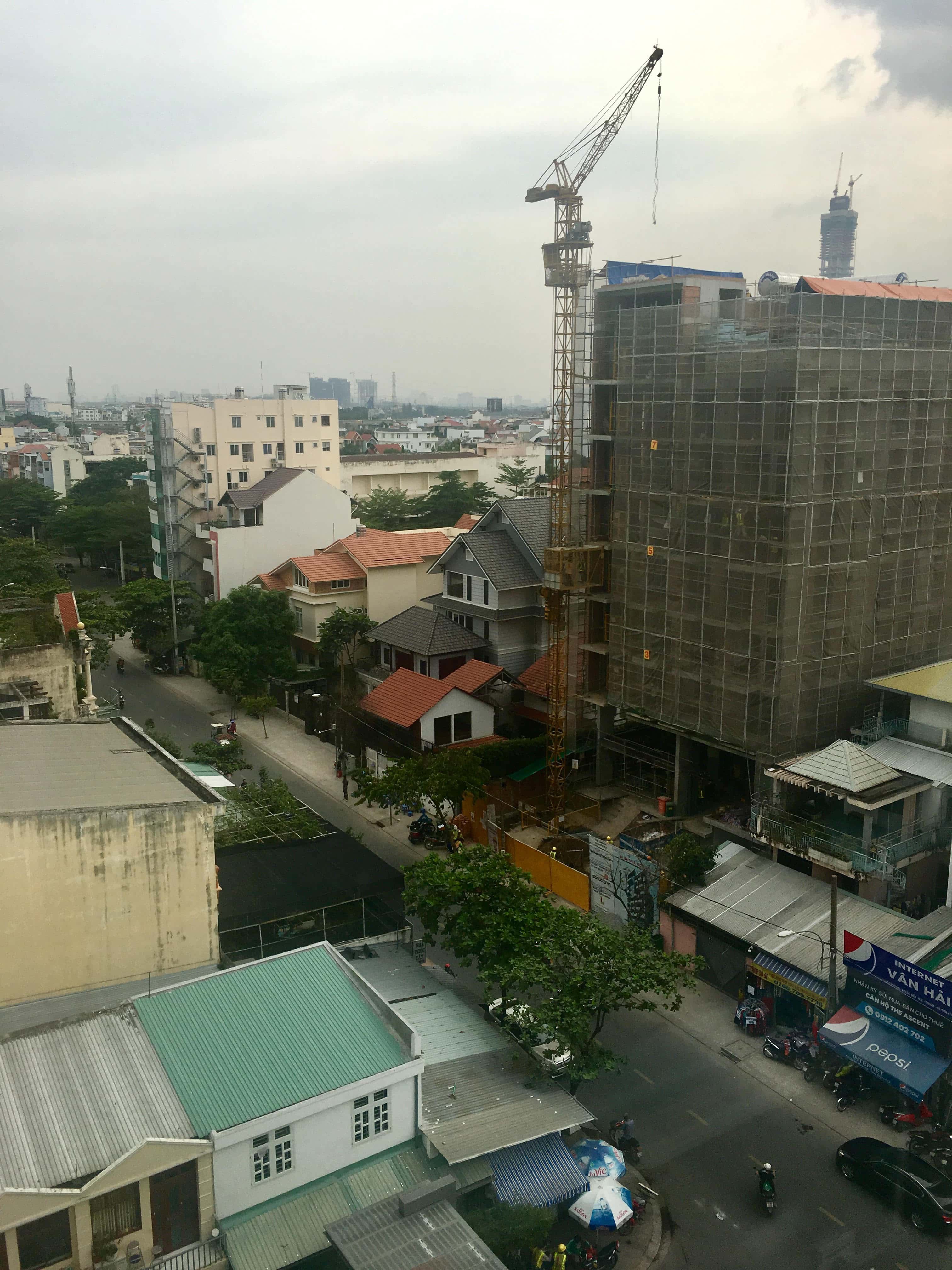
Ho Chi Minh City is under construction. Walking out my door each morning, I face the skeleton of a high-rise being pounded into life. The road is dusty with building materials. All down the street, workers stand atop emerging sky scrapers, pressing new beams against the sun. I write my fieldnotes in a half-built mall. Inside workers fix bolts and electrical wires to bring it into being. Just outside, the electric eyes of a spectacle shop blink open and closed.
The new city grows on top of the old city, but both are vibrantly alive. In the hottest moments of the early afternoon, one may find a rare moment of quiet where the old city meets the new near the Saigon Bridge. A pagoda rests in the shadow of a lulled traffic overpass. Fruit venders rest in the shadow of the monastery. Drivers idle under the shade of the vending carts, picking through the oranges and mangos that are a reminder that the concrete does end somewhere. For many people I know, that somewhere is home.
The city growth is fed by aspirations. In the last five years, millions have moved here chasing work, education, marriages, and opportunities for success they feel are only available in Ho Chi Minh City. One mother who came here for her children’s education tells me, “Everyone wants to move to Saigon. Foreigners want to move to Saigon, Vietnamese people want to move to Saigon. Everyone comes here.”
Amidst the concrete, there are two places I most often see bare ground: in the courtyards of monasteries packed down by prayerful feet, and between the metal frames of new buildings packed down by ambitious hands. The growth of religious communities is inseparably intertwined with the growth of the market in Ho Chi Minh City. Religion is thriving in this urban environment, as is also documented in Philip Taylor’s edited anthology Modernity and Re-enchantment: Religion in Post-revolutionary Vietnam (2007).
The popularity of religion is most materially visible in the rising number of shrines appearing in alleyways and businesses. Small shrines to two squat, jolly business gods have become regular fixtures on fruit carts and cafes, at gyms, and in shop windows. Porcelain statues of the two men, rarely more than six inches tall, rest in polished wooden boxes, just large enough to contain a platform for offerings of fruit, tea, and incense. The two gods work together: one catches the eyes of customers and draws them in, the other entices customers to spend more. These miniature wooden shrines also occasionally house Quan Âm, the Bodhisattva of compassion. In the alley behind my apartment complex, a shrine is only just visible in the rubble of a neighboring construction site. Inside, a delicate figurine of Quan Âm diligently protects the project site from flooding.
As my time in Vietnam continues, I look forward to learning more about how urban life in Ho Chi Minh City is shaped by religious imaginations, and how religious life, in turn, is influenced by Ho Chi Minh City’s urban growth. One thing is certain: in this setting, one cannot begin to understand one without the other.
---------------------------------------------
Contact Information
